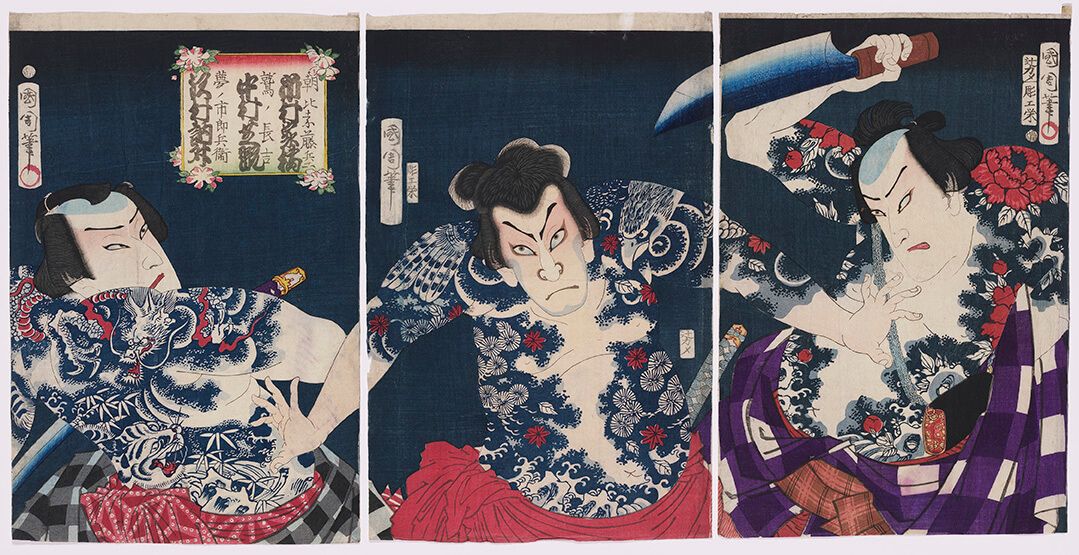Some of the world’s most popular tattoo motifs trace back to early 19th-century Edo (modern Tokyo), where tattoo artists took inspiration from color woodblock prints known as ukiyo-e. Many of the early tattoo artists were trained as blockcutters, craftsmen who transformed designs drawn on paper into carved wooden blocks for mass-producing prints. In the late 1820s, the artist Kuniyoshi designed a series of prints showing Chinese martial arts heroes with spectacular tattoos that were—and still are—often copied by real-life tattoo artists.
Today, the global popularity of tattoos has brought renewed attention to the centuries-old Japanese tradition. Drawn from the Museum of Fine Arts, Boston’s renowned collection of Japanese art, Tattoos in Japanese Prints looks closely at the social background, iconography, and visual splendor of tattoos through the printed media that helped carry them from the streets of Edo-period Japan to 21st-century tattoo shops all over the world.
This exhibition is organized by the Museum of Fine Arts, Boston.
COMMUNITY ADVISORY COMMITTEE
- Kie Young | President of Jacksonville Japanese Association & President of Mayor’s Asian American Advisory Board
- Wenying Xu | JU Professor of English
- Hiromi Moneyhun | Local Artist
- Chau Kelly | Associate Professor of History & Faculty Coordinator for Asian Studies Program
- Nick Wagner | Tattoo Artist & Owner of Black Hive Tattoo
Image:
Toyohara Kunichika (Japanese, 1835 – 1900), Actors Ichimura Kakitsu IV as Asahina Tōbei (R), Nakamura Shikan IV as Washi no Chōkichi (C), and Sawamura Tosshō II as Yume no Ichibei (L), Edo period–Meiji era, 1868 (Keiō 4/Meiji 1), intercalary 4th month, woodblock print (nishiki-e); ink and color on paper. Museum of Fine Arts, Boston, William Sturgis Bigelow Collection, 11.41710a-c. Photograph © Museum of Fine Arts, Boston.



